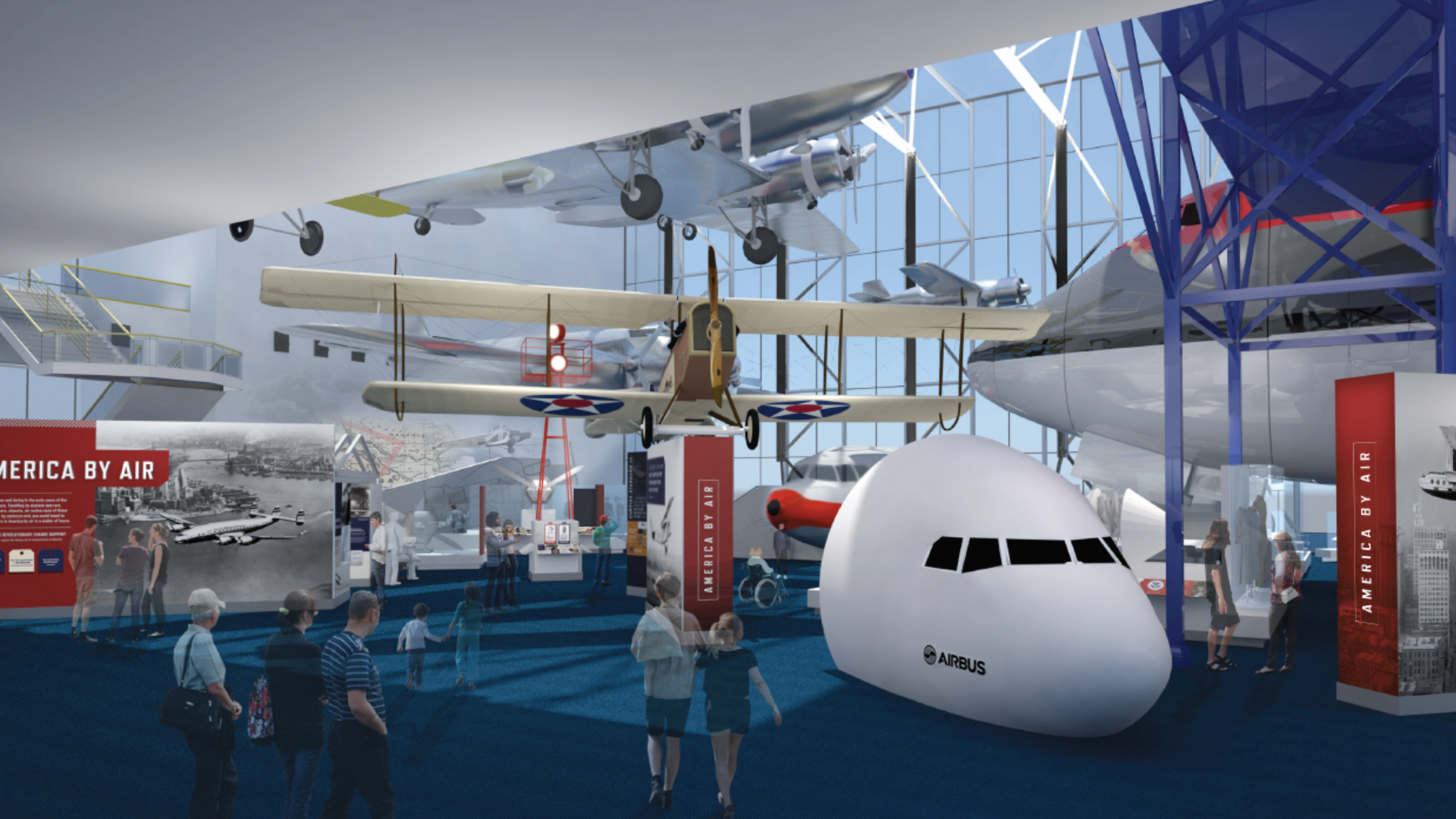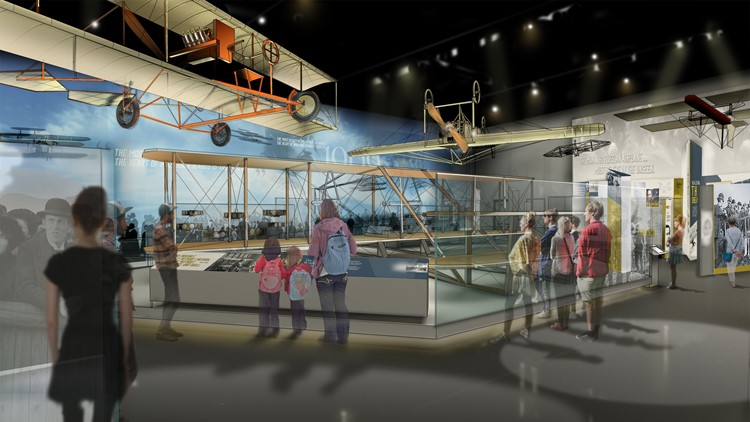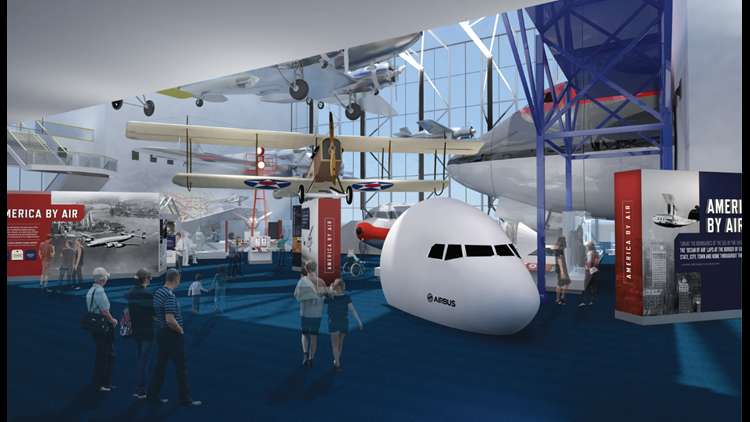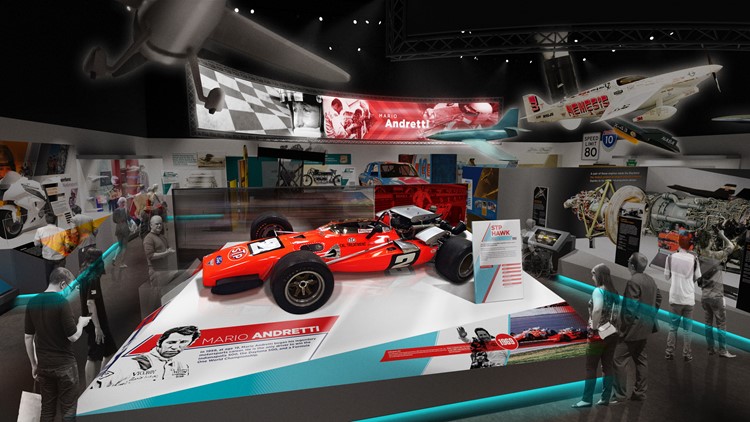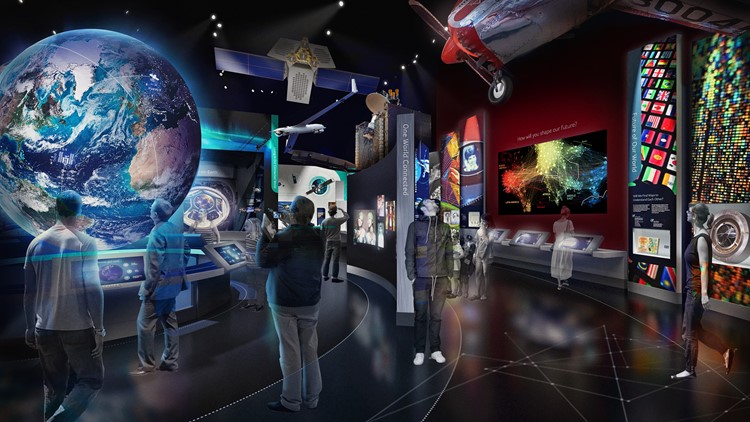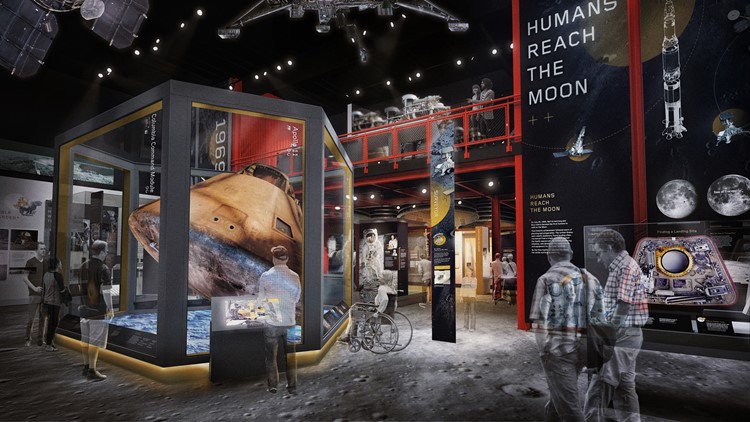WASHINGTON — Families and field trips visiting the country’s most popular museum might notice something… missing. About one half of the Smithsonian’s National Air and Space Museum is now closed for a major construction project while the rest of the museum remains open.
Museum deputy director Chris Browne gave WUSA9 an exclusive tour of the work taking place since January. Once-crowded galleries are being cleared out for construction.
“The volume of activity is enormous,” said Browne “A lot of these aircraft and artifacts haven’t moved in 40 years.”
In August, the X-15 (which holds the record for top speed by a crewed aircraft) and the Douglas D-558-2 Skyrocket were relocated to the museum’s storage facilities near Dulles Airport. During our tour, we saw that entire America by Air gallery has been mostly emptied out. Museum staff and contractors are carefully packing away artifacts.
See the "reimagined" National Air & Space Museum
The reason for the work, said Browne, is due to the museum’s 45-year-old marble walls. He said marble about one half the ideal width was used to construct the museum, which opened in 1976. Crews are removing warping stone on the museum’s west side, which will reopen in 2022.
RELATED: British aerobatic team makes its first-ever visit to DC area. Here’s when you can see them next
“We’re taking it down to the steel, so everything has to come out and disassembled and reassembled again,” said Browne.
Seven, re-imagined galleries are coming when the first half of the work ends in about two years. But then, crews will focus their attention on the other half of the museum. The second phase of work and closures will end in 2025.
Browne said staff debated about whether to close the entire museum but decided on a two-stage strategy so visitors don’t miss out on what can be a once-in-a-lifetime visit.
“It’ll certainly be a well worth a visit seven years from now,” said Brown. “But we encourage folks… if you’re here, come. There still and always will be a lot to see.”
This project will cost $900 million. More than a third was paid for by your federal taxes and the rest was raised by the museum.
In October, the museum’s Independence Avenue exit will close for about two years, when new galleries are slated to open.

